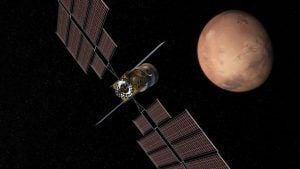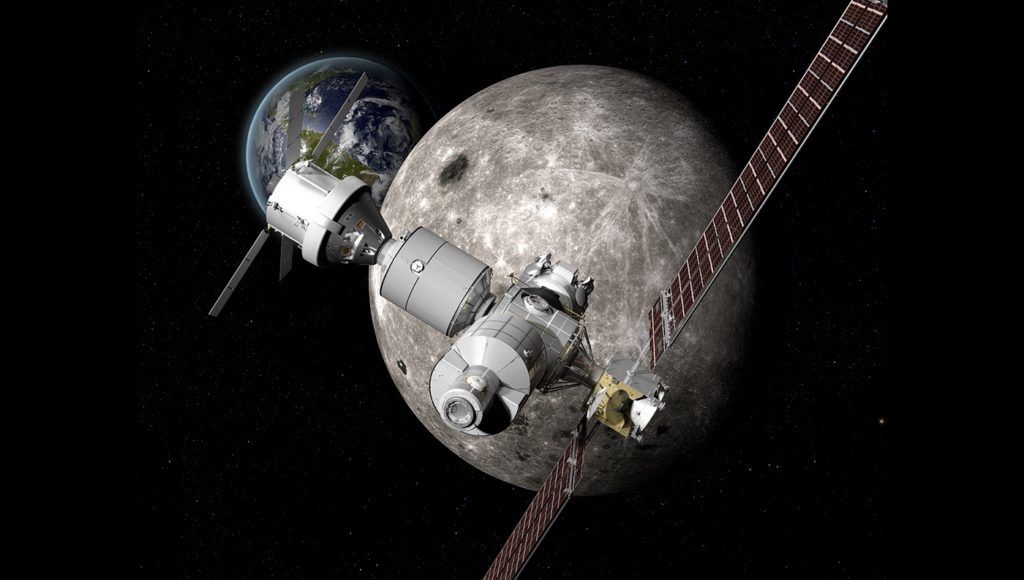Boeing has unveiled concepts for a Deep Space Gateway and transport systems that would help achieve NASA’s goal to establish robust human space exploration to the moon and Mars. It could be in place by the early 2020s.
The Gateway could host the Deep Space Transport vehicle – a vehicle designed to take humans to Mars and equipped with a habitat that will protect passengers from the harsh environmental conditions of deep space. Once near Mars, the crew could deploy a lander for surface missions or conduct other scientific and robotic missions in orbit.
This habitat—propelled to cislunar space by NASA’s Space Launch System—will support critical research and open new opportunities for global partnerships in deep space exploration. SLS’s flexibility to carry crew and cargo is critical to achieving operational status within the next decade, and in as few as four launches.

The Deep Space Gateway will be powered by Solar Electric Propulsion (SEP), leveraging proven technology from Boeing’s 702 satellite family and utilizing a docking system akin to one used for commercial operations on the ISS.
Putting humans on Mars is closer than you think, a Deep Space Gateway helps us get there.
The gateway and transport systems are partially being developed as part of NASA’s Next Space Technologies for Exploration Technologies (Next Step) program and an ongoing High Power SEP technology development effort within the NASA Space Technology Mission Directorate.
